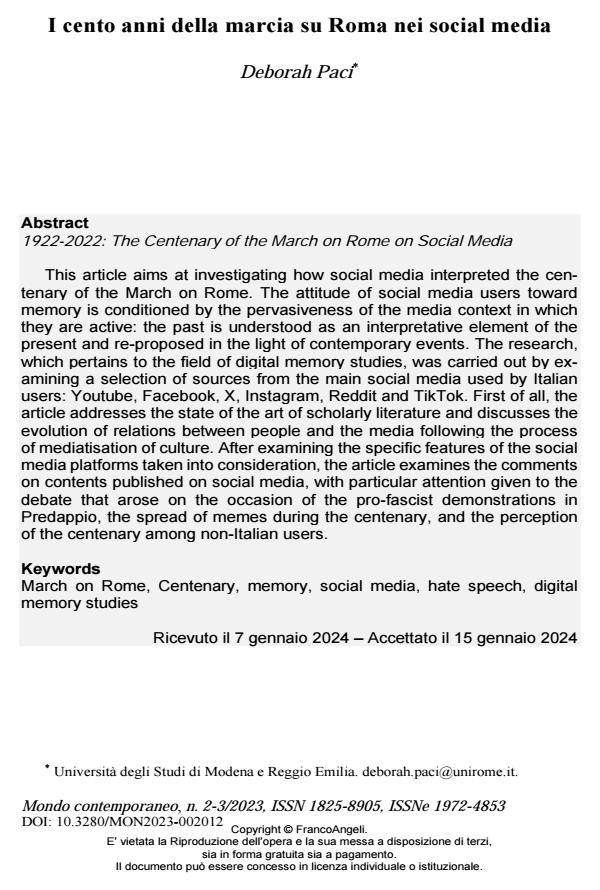1922-2022: The Centenary of the March on Rome on Social Media
Journal title MONDO CONTEMPORANEO
Author/s Deborah Paci
Publishing Year 2024 Issue 2023/2-3
Language Italian Pages 32 P. 304-335 File size 891 KB
DOI 10.3280/MON2023-002012
DOI is like a bar code for intellectual property: to have more infomation
click here
Below, you can see the article first page
If you want to buy this article in PDF format, you can do it, following the instructions to buy download credits

FrancoAngeli is member of Publishers International Linking Association, Inc (PILA), a not-for-profit association which run the CrossRef service enabling links to and from online scholarly content.
This article aims at investigating how social media interpreted the cen-tenary of the March on Rome. The attitude of social media users toward memory is conditioned by the pervasiveness of the media context in which they are active: the past is understood as an interpretative element of the present and re-proposed in the light of contemporary events. The re-search, which pertains to the field of digital memory studies, was carried out by examining a selection of sources from the main social media used by Italian users: Youtube, Facebook, X, Instagram, Reddit and TikTok. First of all, the article addresses the state of the art of scholarly literature and discusses the evolution of relations between people and the media fol-lowing the process of mediatisation of culture. After examining the specific features of the social media platforms taken into consideration, the article examines the comments on contents published on social media, with par-ticular attention given to the debate that arose on the occasion of the pro-fascist demonstrations in Predappio, the spread of memes during the cen-tenary, and the perception of the centenary among non-Italian users.
Keywords: March on Rome, Centenary, memory, social media, hate speech, digital memory studies
Deborah Paci, I cento anni della marcia su Roma nei social media in "MONDO CONTEMPORANEO" 2-3/2023, pp 304-335, DOI: 10.3280/MON2023-002012